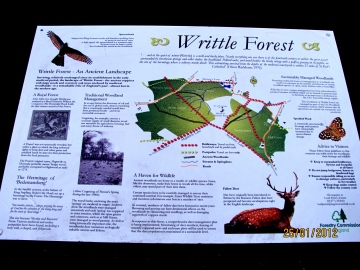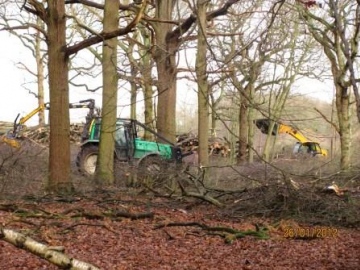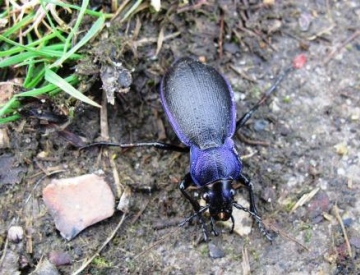Imagine my joy, therefore, when - during a walk on Friday - I discovered that commercial coppicing had resumed in Deerslade.
A fellow walker remarked that the site looked like a 1st World War battlefield but to me those stacks of timber, piles of brash and churned up woodland floor were a thing of beauty! I look forward to returning a few months hence to see what plants and other wildlife have begun - even in that short period of time - to respond to the inrush of light beneath the trees.
There are 32 species of bird that have declined by between 80% and 100% in the Ingatestone/Highwood area since the 1939-45 War, most of them from the 1970s onwards. Lack of coppicing has certainly played a part in the demise of several woodland species but today, as I left the woods behind me, I encountered one of the few that have increased since that time. Two pairs of Buzzards were engaged in a ritualistic territorial dispute that involved much 'mewing' (a wonderful sound), sky diving and competing between males to see who could soar higher than the other. It is neither a sight nor sound that I could have dreamed of witnessing locally when I was a boy, a time when the Buzzard was a rare vagrant to the County and they bred no closer than Devon.
The larger fungi now seem to be confined to those few species that can endure our winter weather. A walk between St Lawrence Bay and Bradwell St Peter's on 22nd produced sightings of Wrinkled Peach Rhodotus palmatus and Velvet Shank Flammulina velutipes on dead elms alongside the seawall and Scurfy Twiglet Tubaria furfuracea growing on the debris beneath them while the log pile in my garden yielded the Winter Polypore Polyporus brumalis and Bitter Oysterling Panellus stipticus.
The first Daffodil of the spring was in bloom in the garden on 25th and a nearby Viburnum attracted the first bumblebee, the Buff-tailed Bombus terrestris, which may live to regret its early emergence if the weather forecast for next week is correct. Another unexpected sighting was a fine Velvet Ground beetle, disturbed during a work party at The Backwarden EWT Reserve, Danbury on 28th.




















